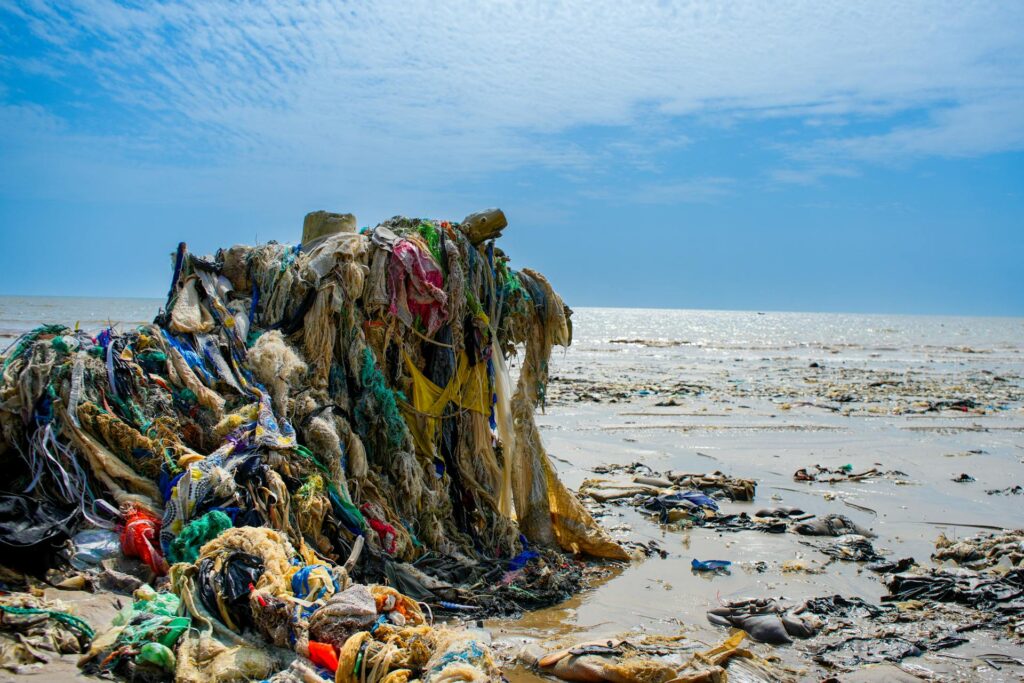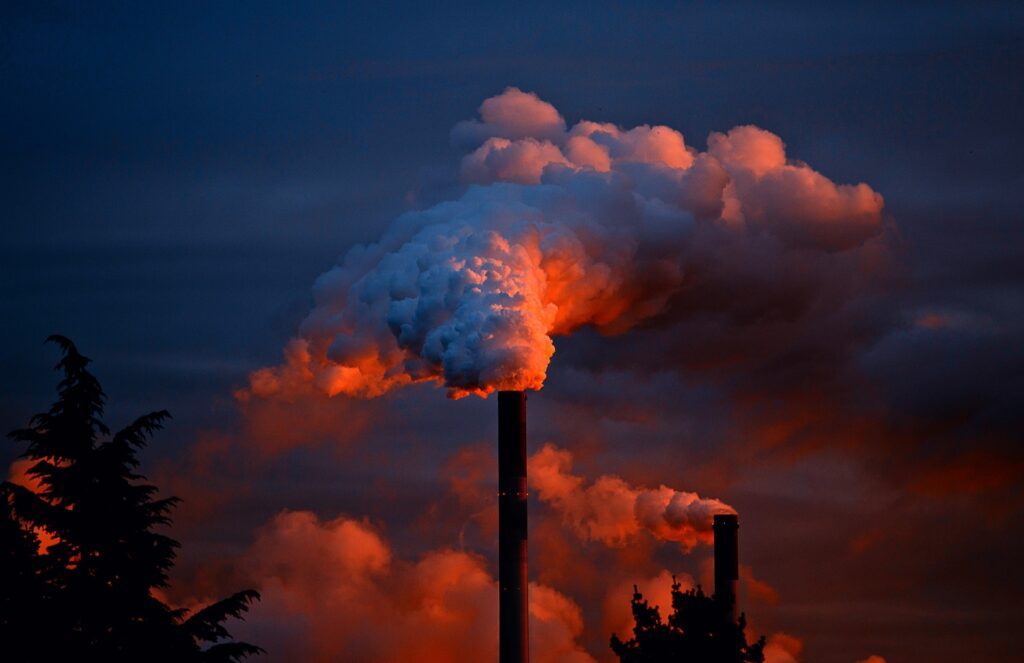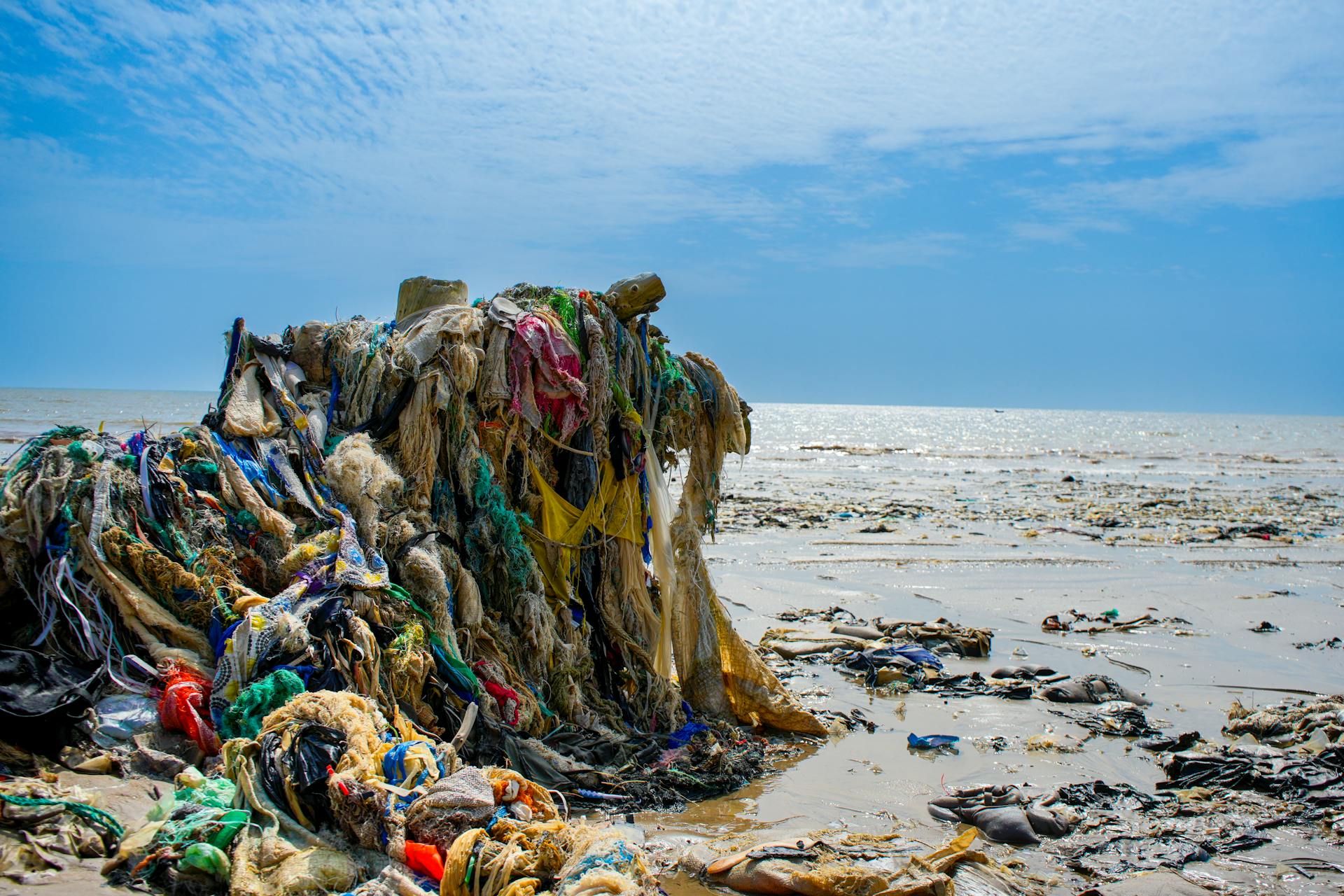The term “fast fashion” describes the practice of rapidly producing and selling clothing at low costs, closely following the latest trends to meet current consumer demands. This model relies on swiftly designing, manufacturing, distributing, and marketing apparel, allowing retailers to offer a vast array of styles at affordable prices. The entire process, from conception to consumer purchase, is known as “lead time.” For instance, in 2012, Zara managed to design, produce, and deliver new items within two weeks, while Forever 21 took six weeks and H&M eight weeks. This accelerated cycle, while meeting consumer demand, contributes significantly to fashion industry waste.
Fast fashion’s environmental impact is staggering. In 2023, the apparel market was valued at $1.23 trillion, reflecting the massive scale of this industry. The production of textile fibers has skyrocketed from approximately 24 million metric tonnes in 1975 to over 113.8 million metric tonnes by 2022. According to the American Chemical Society, fashion production has doubled since the 2000s and is projected to triple by 2050. The production of polyester, a common material in fast fashion and athleisure wear, has increased nine-fold over the past 50 years. This increase in production has led to clothing becoming so cheap that it is often discarded after minimal use. Surveys have shown that 20% of clothing in the US is never worn, while in the UK, this figure is 50%. The rise of online shopping, available 24/7, has further fueled impulse buying and easy returns. McKinsey reports that consumers now purchase 60% more clothing than they did in 2000 but retain items for half as long. Additionally, a 2017 study found that 41% of young women felt compelled to wear something different each time they went out.

The environmental consequences of fast fashion are profound, making the fashion industry the world’s second-largest polluter, trailing only the oil industry. As the industry grows, so does its environmental damage. Fast fashion contributes to CO2 emissions, the release of plastic microfibers into oceans, industrial water pollution, and more. Historically, fashion has evolved with the seasons, reflecting climate changes. However, this relationship has taken a detrimental turn, with fashion now contributing to climate change instead of merely responding to it. This shift underscores the urgent need to address the environmental impact of fast fashion and explore more sustainable practices in the industry.
Water Consumption in the Apparel Industry
The fashion industry is a major consumer of water, utilizing vast quantities of freshwater in the dyeing and finishing processes of clothing. Annually, the industry consumes around 79 trillion liters of water. Dyeing fabric alone can require up to 200 tonnes of freshwater per ton of fabric. Additionally, cotton, a staple material in fashion, demands significant amounts of water and heat to grow, often in warm and dry regions. Producing just one kilogram of cotton can take 10,000 liters of water, equating to approximately 2,700 liters for a single cotton t-shirt. Purchasing cotton clothing indirectly means “using” water from the regions where the cotton was cultivated and processed. This places enormous pressure on already scarce water resources, leading to severe ecological consequences. A stark example is the desertification of the Aral Sea, once the world’s fourth-largest lake, now nearly vanished due to cotton cultivation. The UN has termed this one of the planet’s worst environmental disasters. The water footprint of cotton is staggering. In 2013, the water used to grow India’s cotton exports could have supplied 85% of the country’s 1.24 billion people with 100 liters of water daily for a year. Meanwhile, over 100 million people in India lack access to safe water, highlighting the severe imbalance in water distribution and usage.

Water Pollution by the Apparel Industry
The fashion industry plays a significant role in water pollution, primarily through the runoff of pesticides and fertilizers used in natural material production and the contamination of waterways with toxic chemicals throughout the textile production process. This contamination occurs during various stages, including pre-treatment, dyeing, printing, and finishing. The introduction of excess nutrients into water bodies leads to eutrophication and algal blooms. The dyeing process alone, involving hazardous chemicals, accounts for 17 to 20 percent of global industrial water pollution, with 72 toxic chemicals identified in the water used for textile dyeing. The problem extends beyond production to the use phase of clothing, particularly through domestic laundering. Currently, an estimated 60% of clothing and 70% of household textiles are made from synthetic fibers, making the fashion sector a significant source of plastic pollution. A single laundry load of polyester clothes can release up to 700,000 microplastic fibers, which can end up in the food chain. Annually, between 200,000 and 500,000 tonnes of microplastics from textiles enter the marine environment, with the textile industry responsible for 35% of oceanic microplastic pollution. Moreover, large volumes of unsold and discarded clothing contribute further to water pollution through leachate from landfills. The Citarum River in Indonesia, home to over 200 textile factories along its banks, is considered the most polluted river in the world due to textile industry waste.
The use of chemicals in the fashion industry also has severe health impacts. Thousands of people die from cancer and miscarriages each year due to the chemicals sprayed on cotton. A significant portion of the chemicals produced globally is used in the textile industry, highlighting the need for safer and more sustainable practices to protect both human health and the environment.
Waste Generation in the Apparel Industry
The fashion industry produces an astonishing 100 billion garments each year, with fast-fashion brands releasing up to 52 micro-collections annually instead of the traditional two seasons. As of 2023, this relentless production resulted in approximately 97 million tonnes of waste annually. This waste includes 18 million tonnes of leftover textiles, 2.5 million tonnes of chemical waste, and 3 million tonnes of packaging materials. Alarmingly, only about a quarter of used clothing is reused or recycled globally, with around 75% ending up in landfills or being incinerated.
A staggering 87% of fibers used in clothing production do not get recycled, contributing to both pre-consumer waste from manufacturing and post-consumer waste from discarded clothing. The extensive use of plastic packaging throughout the production, distribution, and retailing stages of fashion products exacerbates the waste problem. While incineration is sometimes considered a better alternative to landfilling as it recovers some energy and reduces landfill volume, it also releases high levels of CO2, increasing the carbon footprint of fashion products. Incineration further results in toxic ash contaminated with heavy metals. Landfills, on the other hand, emit methane and CO2, require large land areas, and negatively impact biodiversity, soil fertility, and local landscapes. Groundwater pollution from landfill leaks poses serious risks to ecosystems and human health globally.
The disposability of clothing has led to a significant increase in textile waste. In Europe, a family discards an average of 11 kilograms of clothing each year, with only 15% being recycled or donated while the rest ends up in landfills or incinerated. The scale of this waste is staggering: every second, the equivalent of one garbage truck of textiles is wasted. In the United States, textiles account for 5.8% of landfill waste. A major factor in this issue is the widespread use of synthetic fibers, such as polyester, which are present in 69% of our clothing. These synthetic fibers are non-biodegradable and can take up to 200 years to decompose. As a result, vast amounts of textiles are not breaking down naturally, contributing to long-term environmental pollution.
Greenhouse Gas Emissions from the Apparel Industry
The fashion industry is a significant contributor to global greenhouse gas (GHG) emissions, accounting for between 5% and 10% of the total. In 2022 alone, 53.8 gigatonnes of CO2 equivalent (CO2e) GHGs were released worldwide. The industry’s high emissions are primarily due to the energy-intensive processes involved in the production, manufacturing, and transportation of the millions of garments purchased each year. Synthetic fibers, such as polyester, acrylic, and nylon, dominate the fashion industry. These materials are derived from fossil fuels, making their production much more energy-intensive compared to natural fibers. The burning of fossil fuels and biomass, along with land use and management practices, contribute significantly to CO2 emissions. Furthermore, the premature discarding of clothes, often destined for incineration or landfills, generates substantial GHG emissions. Cheap synthetic fibers also release other harmful gases, such as nitrous oxide (N2O), which is 300 times more damaging than CO2.

Soil Degradation in the Apparel Industry
Soil is a crucial component of our ecosystem, essential for food production and carbon absorption. However, the massive, global degradation of soil is one of the most pressing environmental issues today. It threatens global food security and contributes to global warming. The fashion industry, particularly through the cultivation of cotton, plays a significant role in soil degradation. Cotton is often grown using pesticides and other chemicals that harm the soil and the farmers who cultivate it. Synthetic fertilizers and pesticides can runoff into water sources, posing risks far beyond the fields. While pesticides target pest species, they also indiscriminately kill beneficial organisms like worms, which are vital for nutrient cycling in the soil.
Intensive agriculture practices, where crops are continuously grown without rotation, exacerbate soil degradation and lead to decreased soil fertility and desertification. The use of harmful chemicals in cotton farming also poses serious health risks to humans. According to Pesticide Action Network UK, up to 500 people die daily from acute pesticide poisoning, with many more suffering from long-term health conditions, including cancer.
Overgrazing is another significant factor contributing to soil degradation. The raising of cashmere goats and sheep for their wool has led to overgrazing, particularly in regions like Mongolia, where 77% of the surface faces the threat of desertification. Similarly, large parts of Patagonia are affected by desertification due to sheep grazing.
Deforestation to produce wood-based fabrics such as rayon, viscose, and modal further exacerbates soil degradation. Each year, thousands of hectares of endangered and ancient forests are cut down and replaced with tree plantations for these fabrics. The global apparel industry uses forest-based fabrics for 6% of its production, with 30% of rayon and viscose clothing coming from endangered forests. Annually, 200 million trees are cut down to make clothes, threatening ecosystems and indigenous communities. For instance, large-scale deforestation of rainforests in Indonesia over the past decade has had devastating effects on the environment and local communities.
Additional Impacts of the Apparel Industry
The fashion industry is fraught with issues related to working conditions and wages. Many garment workers endure long hours, unsafe environments, and wages that are insufficient to meet basic needs. Health and safety conditions are often poor, exposing workers to hazardous chemicals without proper protection. Child and forced labour are persistent problems, with children and adults coerced into working under harsh conditions. Additionally, toxic substances used in clothing can cause health issues for consumers, including skin irritations and long-term risks such as cancer. Addressing these issues requires a shift toward more ethical and sustainable practices in the industry.
As consumers, our choices matter. Supporting brands that prioritize environmental and social responsibility can drive positive change in the fashion world.


